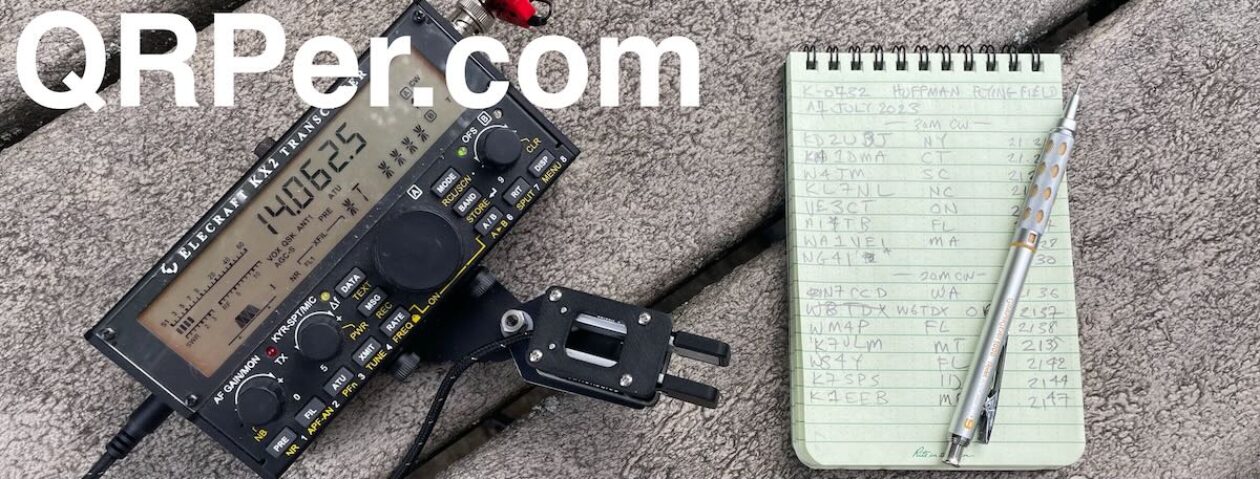In early February, Jeff (KD4VMI) sent the following message to me:
Good evening. Love your YouTube videos and QRPer posts and, from them, I know you appreciate rugged packs and gear.
I enjoy POTA, although I don’t get out as often as I’d like, but I’ve found Blue Ridge Overland Gear’s various bags and modular systems to be very handy for bundling my radios, batteries, cables, and antennas.
It’s been on my mind for some time to let you know about them (if you don’t know about them already) and I finally decided to take the time to write you. I’m not associated with them in any way, and I didn’t approach them about passing this on to you, or anything like that. I just really appreciate their gear and I think you might, too.
The BROG materials are high quality and stout, the zippers are beefy and smooth, everything is double or triple stitched and everything is modular so it can be used for just about anything, and in pretty much endless combinations with their various bags and gear.
Their products are not overly cheap, but are guaranteed for life. They’re located in Bedford, Virginia and all their things are made in the USA (I think mostly in Bedford).
I often use their tire puncture repair kit bag, for instance, to carry my FT-891, Bioenno battery, cables and mic, and PackTenna, and then strap the coax to the Molle system on the front of the bag.
They posted a YouTube video showing their gadget bag with accessory pouches for HTs, etc.
Their website is: https://www.blueridgeoverlandgear.com/.
Anyway, I appreciate all you do for our great hobby and just wanted to share this info.
Take care and all the best to you and yours…
Thank you so much for the kind words, Jeff, and for the tip about Blue Ridge Overland Gear (BROG). You’re obviously a skilled pack enabler because you had my attention by the second paragraph–!
Shortly after my exchange with Jeff, I checked out the BROG website and was really impressed with their line-up of packs and gear–all with a focus on modular organization, especially in-vehicle since it’s for Overlanding. It’s just the icing on the cake that their gear is made in the USA.
I was very curious if their Gadget Bag, in particular, would lend itself to being a modular flied radio kit pack.
Thing is, there are so many options and configurations for the Gadget Bag, I wasn’t entirely sure what to order.
Being a fellow who expects to pay a premium for rugged products, made in the USA–especially ones that carry a lifetime warranty–I was prepared for some sticker shock. Turns out, BROG pricing is pretty reasonable in comparison with other cottage industry pack manufactures.
Still, I wasn’t quite sure how easily some of my radios and gear might fit in their zippered pouches, so I reached out to BROG–mentioning QRPer and my constant search for field radio packs–and asked if I could order some packs and pouches, test them with my radio gear, then pay for what I decided to keep. I didn’t want free gear, I just couldn’t tell based on the product images and posted dimensions what pouches and packs might fit my various radios and accessories. Also, I knew readers might ask if certain pouches and packs might fit certain radios.
The good folks at BROG kindly obliged, so I asked for the following list of items:
– QTY 1 Gadget Bag (shell) in black
– QTY 3 Large Velcro Pouches
– QTY 6 Medium Velcro Pouches
– QTY 1 Velcro Cord Keeper
– QTY 1 Medium GP Pouch
– QTY 1 Velcro Headrest
– QTY 1 Headrest Pouch Kit
Some of these items weren’t in stock, so it was a week or so later when I received notification that the package had shipped. It arrived a couple days later.
I love the feed bag style packaging, by the way.
Photos
Although you’ll start to see this field kit in upcoming activation videos, I thought I share a photo tour of this pack… Continue reading First look at the Blue Ridge Overland Gear Gadget Bag



































